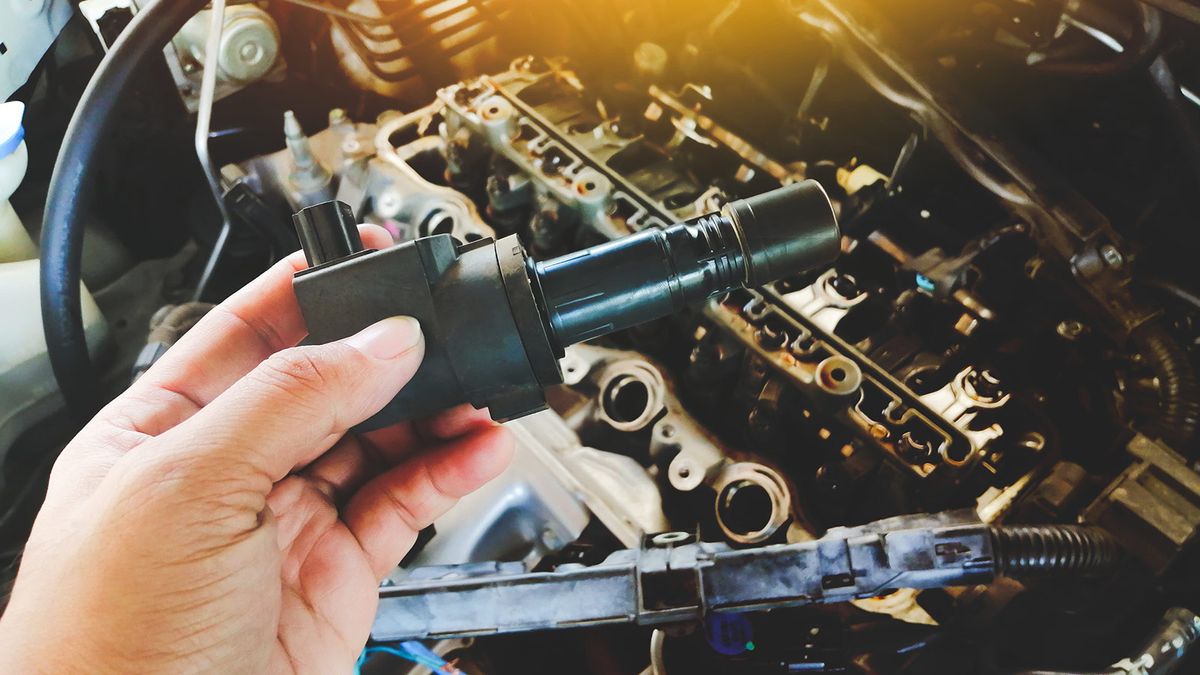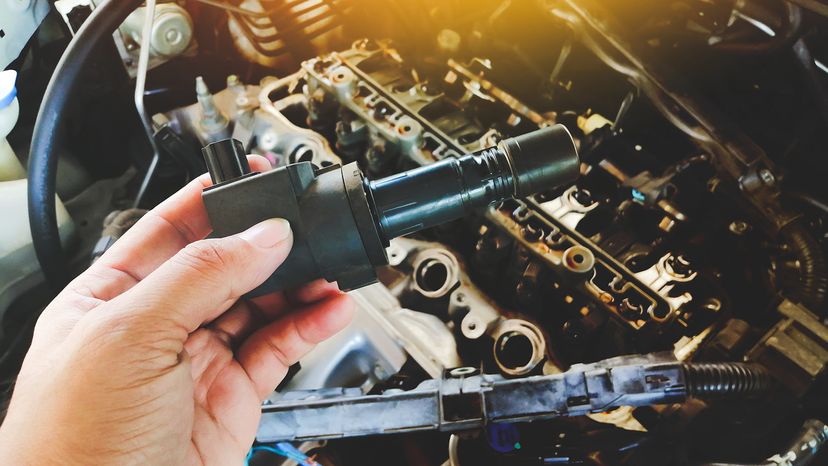

The ignition coil can be found on practically every gasoline-powered internal combustion engine vehicle on the market. In fact, your car probably has several of them — one for each engine cylinder. The ignition coil uses electrical induction to supply your engine with the high voltages necessary for proper fuel combustion. That sounds like a simple task, but it’s important when it comes to your car’s fuel efficiency and reliability. Like most major components, these coils should be inspected and maintained regularly.
Gasoline vehicles are usually powered by a simple 12-volt DC battery. This is enough voltage to engage a starter motor and get the engine turning, but it’s not enough for actual combustion. (A spark plug needs around 40,000 volts for combustion.) That’s where the ignition coil comes in. It contains a step-up transformer (also known as a coil pack) to convert that tiny current into quick bursts of several thousand volts at a time. This electricity is then sent to each spark plug in perfect time with the cylinder’s combustion cycle, igniting fuel vapor with oxygen and producing power. Diesel engines notably lack ignition coils because they ignite their fuel using heat and pressure alone.
A modern ignition coil just looks like a rubber boot that slips onto its spark plug. Up top, there’s an electrical connector for receiving voltage and some threads to mount it securely on the engine. If you were to dissect the component, however, you would find several meters of tightly wound copper wiring that make up the coil pack. These are wrapped around an iron core which receives the 12V current to serve as an electromagnet. The energy stored in the magnetic field of the core is the energy that is transferred to the spark plug. Lastly, the whole coil pack is embedded in a resin insulator to prevent short-circuiting. The ignition coil uses a principle known as Faraday’s law of induction to produce incredible amounts of power, and the same law applies when constructing electric motors as well as generators.
Early cars came with one ignition coil. This coil pack was contained in a part called the distributor which was essentially a bundle of wires leading to each spark plug. The distributor was also responsible for timing each fuel ignition and could become de-calibrated over time, causing the engine to run out of sync. Around the 1980s, automakers began installing electronic sensors to handle ignition timing, and multiple ignition coils for better power and efficiency. Nowadays, most engines have an ignition coil placed directly on top of each spark plug. This is known as “coil on plug” configuration.
These multiple-coil-pack-systems are much more reliable than the distributors of the past, but individual ignition coils can still fail over time and lead to an engine misfire condition. When a cylinder misfires, that means the fuel inside it is not burning at the correct time or not burning at all. This is also sometimes referred to as a dead cylinder. Prolonged misfiring can lead to larger problems like warped piston rods or corrosion inside the cylinder wall. It can also cause unburned fuel to leak into your exhaust system, which is bad for the environment and worse for your car’s catalytic converters. Once identified, a misfire should be addressed as soon as possible.








